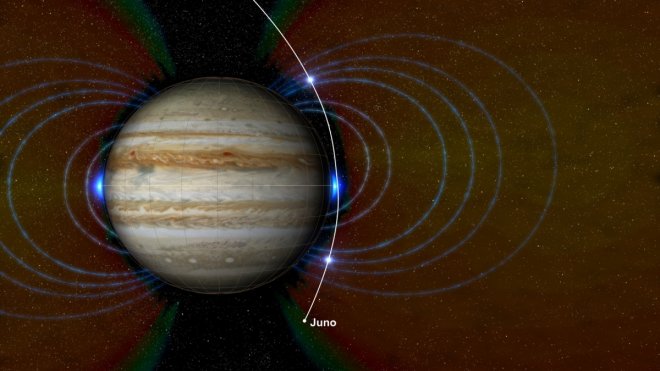
NASA's Juno spacecraft has identified the Great Red Spot in Jupiter's southern hemisphere as a huge storm whose base would be around 50 to 100 times deeper than the Earth's oceans.
The probe measured the red spots width as 10,000 miles (16,000 kilometers) which would be around 1.3 times the width of Earth. The oval-shaped, crimson-colored cloudy storm of the gaseous planet has been found stronger than any storms on the Earth.
Scott Bolton, Juno's principal investigator from the Southwest Research Institute in San Antonio said, "One of the most basic questions about Jupiter's Great Red Spot is: how deep are the roots? Juno data indicate that the solar system's most famous storm is almost one-and-a-half Earth's wide, and has roots that penetrate about 200 miles (300 kilometers) into the planet's atmosphere."
The researchers said that the Great Red Spot's base would be warmer than its top. The temperature difference of the wind has been associated with its speed. The ferocious wind at the top of the atmosphere gives the clue of the warmth at the bottom.
The scientists, however, debate about the future of the Red Spot as it had been found diminishing since its initial study by the Voyager missions. The Voyager 1 and 2 probes, which passed by the Jupiter in 1979, had found that the Great Red Spot was twice the diameter of Earth. However, the recent measurements by Earth-based telescopes and Juno findings say that the storm's width has diminished by one-third while its height has reduced by one-eighth since the Voyager times.
Juno's Microwave Radiometer (MWR) helped it in the in-depth study the Great Red Spot which would be at least 350 years old. Meanwhile, the space vehicle's Jupiter Energetic Particle Detector Instrument (JEDI) had found a new radiation zone above the Jupiter's atmosphere near the equator. Energetic hydrogen, oxygen, and sulfur ions were found to be moving at light speed in this zone.
The particles in the ion zone are believed to be derived from energetic neutral atoms, the fast-moving ions with no electric charge, from the gas around Jupiter moons Io and Europa. The neutron atoms lose their electrons in the upper atmosphere of Jupiter to become ions.
Heidi Becker, Juno's radiation monitoring investigation lead at JPL, said, "The closer you get to Jupiter, the weirder it gets. We knew the radiation would probably surprise us, but we didn't think we'd find a new radiation zone that close to the planet. We only found it because Juno's unique orbit around Jupiter allows it to get really close to the cloud tops during science collection flybys, and we literally flew through it."
Juno had earlier identified auroras in Jupiter's poles. It had given hints of electrically charged particles in the planet's upper atmosphere.









